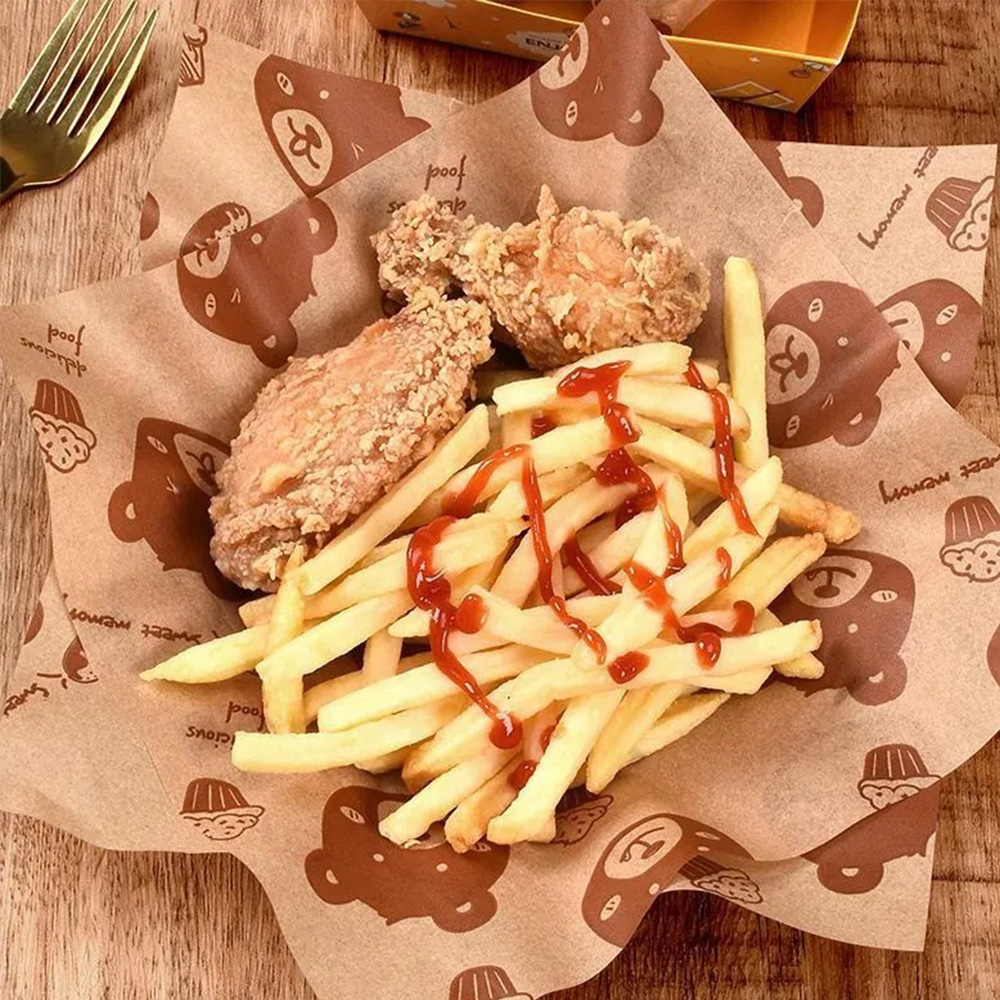Greaseproof paper is designed to block oils, sauces, and cooking vapors from soaking through, keeping packaging clean and presentable. It’s widely used for burger and fried-chicken wraps, sandwich paper, bakery liners, pizza pads, pastry takeout, and snack bag liners.
Common Types (from basic to high level)
Densified Greaseproof (uncoated)
Mechanical refining and supercalendering make the sheet tighter for basic oil holdout. Good for low–medium oil at room temperature or short contact.
Glassine (supercalendered)
Ultra-smooth, semi-translucent surface with more stable grease and moisture resistance. Ideal for bakery liners, candy wraps, dairy interleaves.
Coated Grease-Resistant Paper
Water-based barrier coating boosts grease resistance (higher Kit level). Great for burgers, fried food, pizza and warmer use.
Baking / Parchment (silicone)
Oven-capable, naturally non-stick with mid-to-high grease resistance. Best for tray liners and baking sheets.
Note: Many brands now specify PFAS-free grease barriers (water-based) to meet sustainability and regulatory goals.
Typical Applications
Foodservice takeout: burger/wrap/fried food/pizza liners.
Bakery & desserts: oven liners, cake pads, cookie & candy wraps.
Snacks & nuts: inner liners for pouches and gift boxes to prevent oil staining.
Cafés & drinks: fatty pastries or cheesecake pads.
How to Choose (quick checklist)
Oil level & heat: More oil / higher temp → coated or parchment. Low oil / ambient → uncoated densified can work.
Temperature: Oven or microwave? If yes, choose baking/parchment with stated limits.
Contact time: Longer display/transport → pick higher grease resistance.
Direct vs. indirect contact: With a sealed inner bag, the outer box may not need greaseproof.
Eco & compliance: Prefer PFAS-free barriers; confirm EU/FDA/GB food-contact where required.
Printing & Appearance Tips
Food-contact side: Prefer no print. If needed, use low-odor, low-migration systems and run a sample.
Outer side: Offset/flexo/UV are fine; for large dark solids, add anti-scuff varnish or matte film.
Release: Parchment is naturally non-stick; regular greaseproof needs extra release only if specified.
Testing & Acceptance (simple)
Grease resistance (Kit level): higher = better.
Stain/strike-through: simulate with your actual food (hot and ambient).
Odor/sensory: open-pack should be nearly odorless.
Temperature limit: e.g., parchment 200–220 °C short time—confirm with your supplier.
Rub/dust: check scuff on dark prints; ensure no fiber shedding onto food.
What to Tell Your Supplier
Food type & oil level (low/medium/high; hot oil or not).
Temperature & duration (ambient/hot/oven/microwave; how long).
Direct contact? Need non-stick?
Printing & look (full color? anti-scuff? matte feel?).
Eco & compliance (PFAS-free, recyclable fiber, FSC®, EU/FDA/GB docs).
